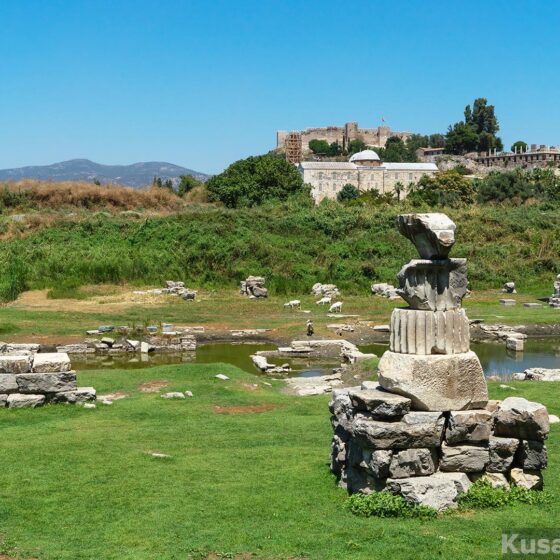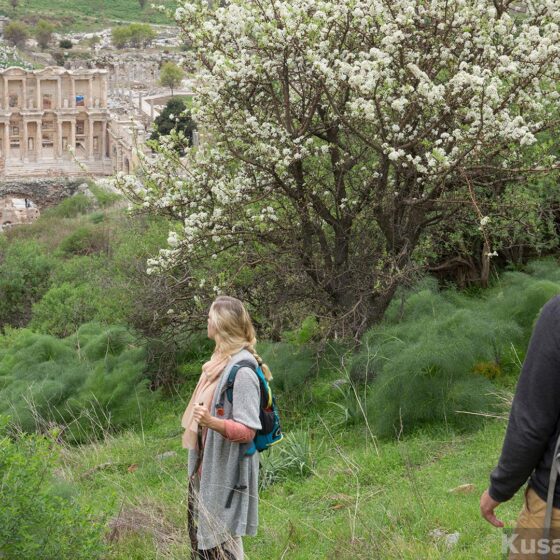Table of Contents Show
The Temple of Artemis in Ephesus was one of the Seven Wonders of the Ancient World. It was an architectural masterpiece, larger than the Parthenon in Athens, and a major religious and cultural center. But today, almost nothing remains of it. How did such a grand structure disappear? Was it destroyed by war, nature, or neglect?
The story of the Temple of Artemis is filled with fire, politics, and the slow decline of a civilization.
A Wonder of the Ancient World
The first version of the Temple of Artemis was built around 550 BC by King Croesus of Lydia. It stood on a grand platform, supported by 127 massive columns, each over 18 meters (60 feet) tall. It was one of the largest temples in the Greek world, designed to honor Artemis, the goddess of hunting, fertility, and protection. Unlike other temples, this one also served as a marketplace, a safe house for the rich, and a center for religious festivals.
Greek writers of the time, including Herodotus and Pliny the Elder, described the temple as the most beautiful structure they had ever seen. But despite its grandeur, the temple faced destruction not once, but multiple times.
See also: Discover Ephesus: Book Your Ephesus Tour Today
The First Destruction: Fire and a Man Seeking Fame
On July 21, 356 BC, a man named Herostratus set fire to the temple. He did it not for political or religious reasons but for one purpose—to be remembered forever. The temple, made of wood and marble, was burned to the ground.
The people of Ephesus were so outraged that they banned anyone from speaking his name, hoping to erase him from history. But ironically, this act only ensured that his name survived. Today, “Herostratic fame” is still used to describe people who commit terrible acts just to gain attention.
Strangely, on the same night the temple burned, Alexander the Great was born. Later in life, when he visited Ephesus, he offered to pay for the temple’s reconstruction, but the people refused, saying that a god should not rebuild a temple to another god.
The Second Temple: Bigger and Stronger
After Herostratus’s fire, the Ephesians rebuilt the temple even larger and more impressive than before. The new version, completed around 323 BC, had even more elaborate carvings, statues, and a marble courtyard. Pilgrims and traders came from all over the Mediterranean to see it and leave offerings to Artemis.
For centuries, the temple stood as a symbol of wealth and devotion. But no temple, no matter how grand, could stand against time, war, and changing beliefs.
See also: Temple of Artemis
The Final Destruction: Invasion and Decay
In 267 AD, the Goths, a group of invading warriors from northern Europe, attacked Ephesus. They burned the city and damaged the temple. Though some parts of the temple survived, it was never fully repaired.
By the 4th century AD, Christianity had become the dominant religion in the Roman Empire. Pagan temples were abandoned or destroyed, and the worship of Artemis declined. In 401 AD, a Christian mob, led by St. John Chrysostom, demolished what remained of the temple, seeing it as a symbol of a dying religion.
Over time, the ruins were quarried for materials. The marble and columns were taken to build other structures, including Hagia Sophia in Constantinople.
Where Is the Temple Now?
Today, almost nothing remains of the once-great Temple of Artemis. Only a single column, reconstructed from broken pieces, stands in a swampy field in modern-day Selçuk, Turkey. The site is quiet, far removed from the grand descriptions of ancient writers.
Some fragments of the temple can still be found in London’s British Museum, where a few statues and carvings are displayed.
See also: Leto, Artemis, and Apollo
The Legacy of the Temple of Artemis
Although the temple is gone, its influence lives on. The story of Herostratus is a lesson about fame at any cost. The destruction of the temple reflects the shifts in power and belief that shaped the ancient world.
Ephesus may have lost one of its greatest wonders, but the memory of the Temple of Artemis continues to inspire archaeologists, historians, and visitors today.
Last updated on February 15, 2025



